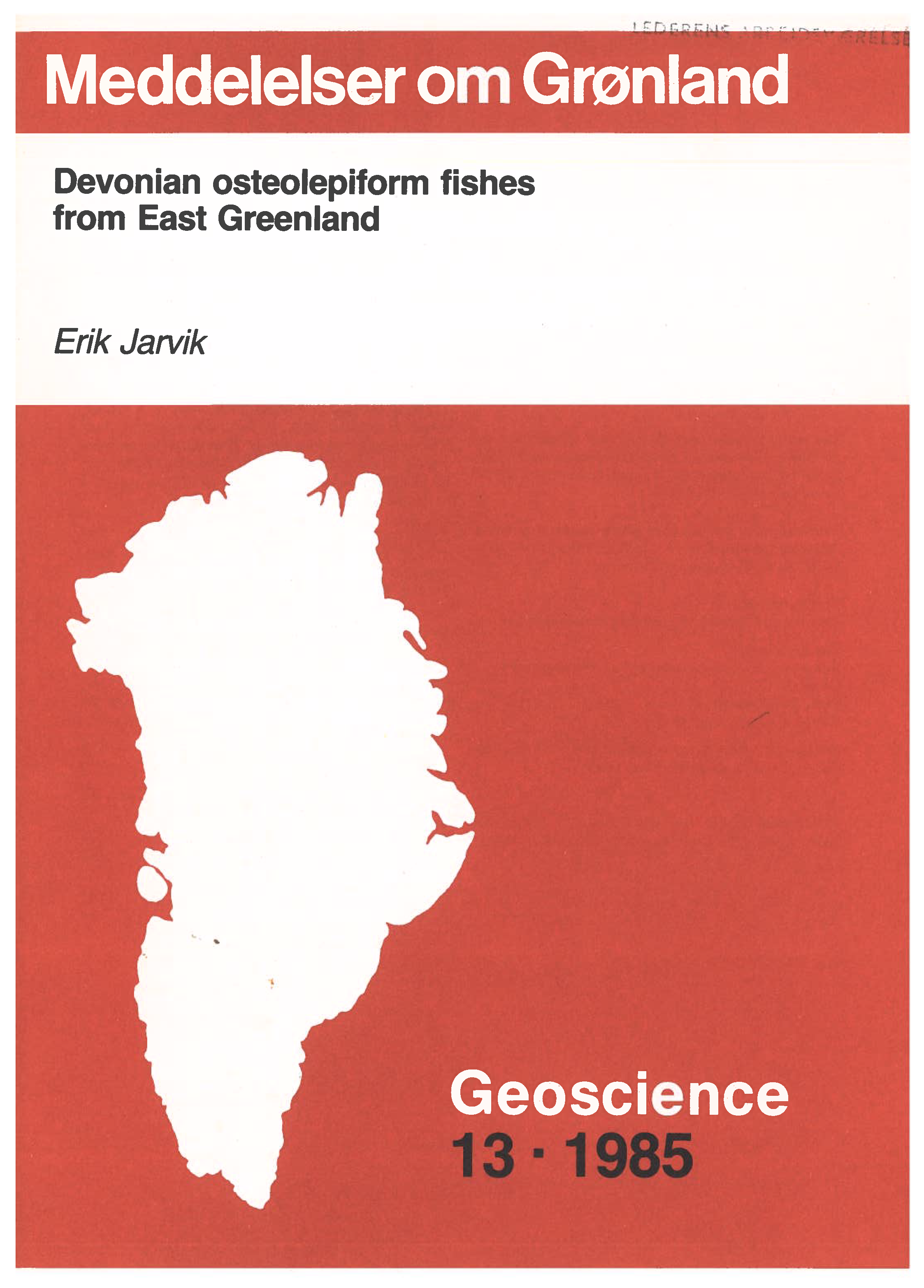Devonian osteolepiform fishes from East Greenland
DOI:
https://doi.org/10.7146/moggeosci.v13i.139674Abstract
The Middle and Upper Devonian deposits of East Greenland have yielded several osteolepiform fishes, of which only two, the osteolepid Gyroptychius groenlandicus Jarvik, 1950 and the rhizodontid Eusthenodon waengsjoei Jarvik, 1952 have been described previously. This paper gives new information on the structure of these two species. Three new forms are described, the osteolepids Gyroptychius dolichotatus sp. nov. and Thursius? minor sp. nov., and a rhizodontid, Spodichthys buetleri gen. et sp. nov.
G. dolichotatus is represented mainly by the holotype, which is the only almost complete specimen of an osteolepiform found in East Greenland. In this specimen the squamation is well preserved, exhibiting structural details unknown or imperfectly shown in other osteolepids. The gradual transition from scales into lepidotrichia is thus well documented, and the remarkable change in direction of the scale rows on the tail is displayed. It is demonstrated that the scale rows are directed anteroventrally (not posterodorsally as previously assumed) and meet the next anterodorsally directed row of flank-scales at varying angles, obtuse in G. dolichotatus, but almost normal in other osteolepids. This change in direction of the scale rows was first thought to be characteristic of actinopterygians with rhomboid scales. In addition to osteolepids it occurs in brachiopterygians (Polypterus) and is shown to occur also in Eusthenopteron, which like other rhizodontids has cycloid scales. A specimen of Gyroptychius groenlandicus provides information on the change in direction of the scale rows at the ventrolateral ridge, which marks the position of the ventrolateral fin-fold. The transformation of therhomboid osteolepid scales into the externally very different cycloid rhizodontid scales is analysed and illustrated.
In Spodichthys the occipital region of the neural endocranium is proportionally longer and includes more cranial vertebrae than in Eusthenopteron. The fissura oticalis ventralis anterioris distinct in several specimens. The ventral arcual plate following in front of that fissura is interpreted as the interventral of cranial vertebra CV 3+4.
The large collections of Remigolepis from East Greenland are discussed taxonomically, the importance of knowledge of variation in palaeontological species is emphasised, and the validity of the antiarch genus Hillsaspis Stensiö and the osteolepiform genera Ectosteorhachis Cope and Eusthenopteron Whiteaves is tested.
In order to emphasise the fundamental differences between the Porolepiformes and the Osteolepiformes, the endoskeletal shoulder girdles in the porolepiform Glyptolepis groenlandica and the osteolepiform Eusthenopteron foordi are illustrated.

Downloads
Published
How to Cite
Issue
Section
License
Coypyright by the authors and the Commision for Scientific Research in Greenland / Danish Polar Center. No parts of the publications may be reproduced in any form without the written permission by the copyright owners.

